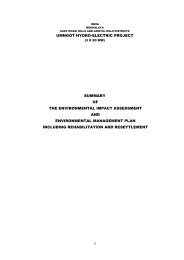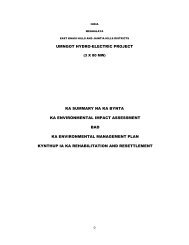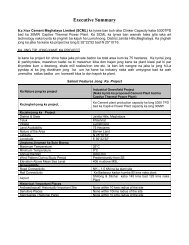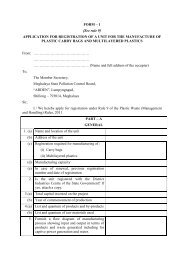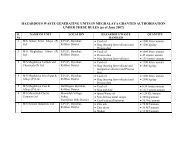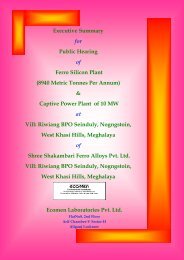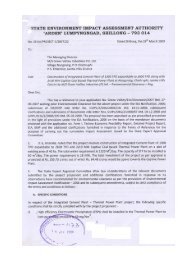chapter - 1 introduction - Meghalaya State Pollution Control Board
chapter - 1 introduction - Meghalaya State Pollution Control Board
chapter - 1 introduction - Meghalaya State Pollution Control Board
Create successful ePaper yourself
Turn your PDF publications into a flip-book with our unique Google optimized e-Paper software.
Hills Cement Co. Limited.<br />
Energy savings depend strongly on the specific energy consumption of the<br />
dry process kiln to be converted as well as the number of preheaters to be<br />
installed.<br />
Installation or Upgrading of a Preheater to a Preheater/Precalciner<br />
Kiln- An existing preheater kiln may be converted to a multi-stage<br />
preheater precalciner kiln by adding a precalciner and, when possible an<br />
extra preheater. The addition of a precalciner will generally increase the<br />
capacity of the plant, while lowering the specific fuel consumption and<br />
reducing thermal NOx emissions (due to lower combustion temperatures<br />
in the pre-calciner). Cooler replacement may be necessary in order to<br />
increase the cooling capacity for larger production volumes. Fuel savings<br />
will depend strongly on the efficiency of the existing kiln and on the new<br />
process parameters (e.g. degree of precalcination, cooler efficiency).<br />
Older calciners can also be retrofitted for energy efficiency improvement<br />
and NOx emission reduction.<br />
Average savings of new calciners can be 0.34 MBtu/ton clinker.<br />
Conversion of Long Dry Kilns to Preheater/Precalciner Kiln- If<br />
economically feasible a long dry kiln can be upgraded to the current state<br />
of the art multi-stage preheater/precalciner kiln. Energy savings are<br />
estimated at 1.2 MBtu/ton clinker for the conversion. These savings reflect<br />
the difference between the average dry kiln specific fuel consumption and<br />
that of a modern preheater, pre-calciner kiln.<br />
6.5. FINISH GRINDING<br />
Process <strong>Control</strong> and Management – Grinding Mills- <strong>Control</strong> systems<br />
for grinding operations are developed using the same approaches as for<br />
kilns. The systems control the flow in the mill and classifiers, attaining a<br />
stable and high quality product.<br />
Similar results have been achieved with model predictive control (using<br />
neural networks).<br />
Advanced Grinding Concepts- The energy efficiency of ball mills for use<br />
in finish grinding is relatively low, consuming up to 30-42 kWh/ton clinker<br />
depending on the fineness of the cement. Several new mill concepts exist<br />
that can significantly reduce power consumption in the finish mill to 20-30<br />
kWh/ton clinker, including roller presses, roller mills, and roller presses<br />
used for pre-grinding in combination with ball mills. Roller mills employ a<br />
<strong>Pollution</strong> <strong>Control</strong> Consultants (India) Pvt. Ltd. 124



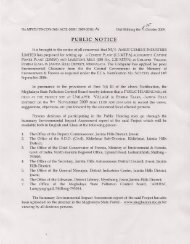
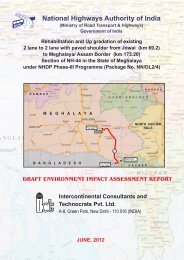

![[FORM I] - Meghalaya State Pollution Control Board](https://img.yumpu.com/49771786/1/190x245/form-i-meghalaya-state-pollution-control-board.jpg?quality=85)


